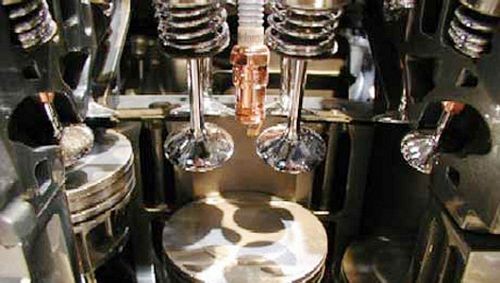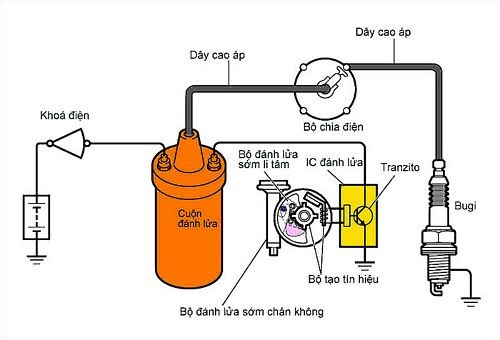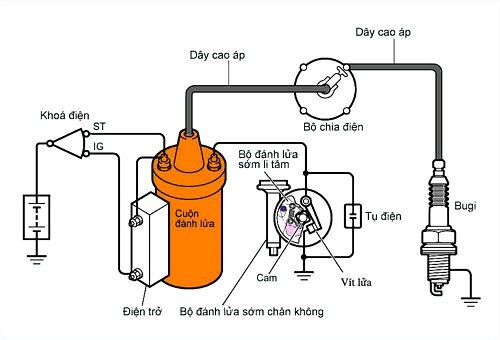The truck ignition system plays a crucial role in transforming battery power into high-voltage pulses, generating sparks to ignite the air-fuel mixture in the combustion chamber. Understanding this system is essential for effective truck operation and maintenance.
 Illustration of an automobile ignition system
Illustration of an automobile ignition system
Requirements of a Truck Ignition System
An effective truck ignition system must meet the following requirements:
- Generate a strong spark: Sufficient voltage to discharge across the spark plug gap under all operating conditions.
- Ensure spark energy and duration: The spark must have enough energy and duration to completely ignite the fuel.
- Precise ignition timing: The ignition timing must be accurate in each engine cycle to optimize performance and fuel efficiency.
Classification of Truck Ignition Systems
Currently, most trucks use semiconductor ignition systems due to their advantages of generating strong sparks, effectively responding to various engine operating modes, and having a long lifespan. Semiconductor ignition systems are mainly divided into two types:
Semiconductor Direct Ignition Systems
- With contact points (breaker points): Similar in structure to conventional ignition systems, but the contact points only serve to switch the transistor.
- Without contact points (breakerless): The power transistor is controlled by an ignition sensor. This type is more common in modern trucks.
 Schematic diagram of a semiconductor ignition system
Schematic diagram of a semiconductor ignition system
Digital Control Ignition Systems
This system uses a microprocessor to control the entire ignition process, allowing precise control of spark timing and energy, optimizing engine performance and reducing emissions.
Main Components of the Ignition System
A truck ignition system includes the following main components:
Spark Plugs
Spark plugs are the components that create the spark in the combustion chamber. The voltage between the spark plug electrodes can reach 40,000 – 100,000V. There are two main types of spark plugs: hot plugs and cold plugs, selected based on engine operating conditions.
Ignition Coil
The ignition coil transforms the low voltage from the battery into high voltage (tens of thousands of volts) supplied to the spark plugs. The operating principle is based on electromagnetic induction between two windings: the primary winding and the secondary winding.
 Key components of an ignition system
Key components of an ignition system
Distributor
The distributor is responsible for distributing high voltage from the ignition coil to the spark plugs in the correct firing order of the engine.
Conclusion
The ignition system is a vital component of a truck engine. Understanding its structure, operating principles, and classification helps truck users maintain and repair it effectively, ensuring stable vehicle operation. Contact Xe Tải Mỹ Đình immediately for consultation and support regarding issues related to truck ignition systems.

